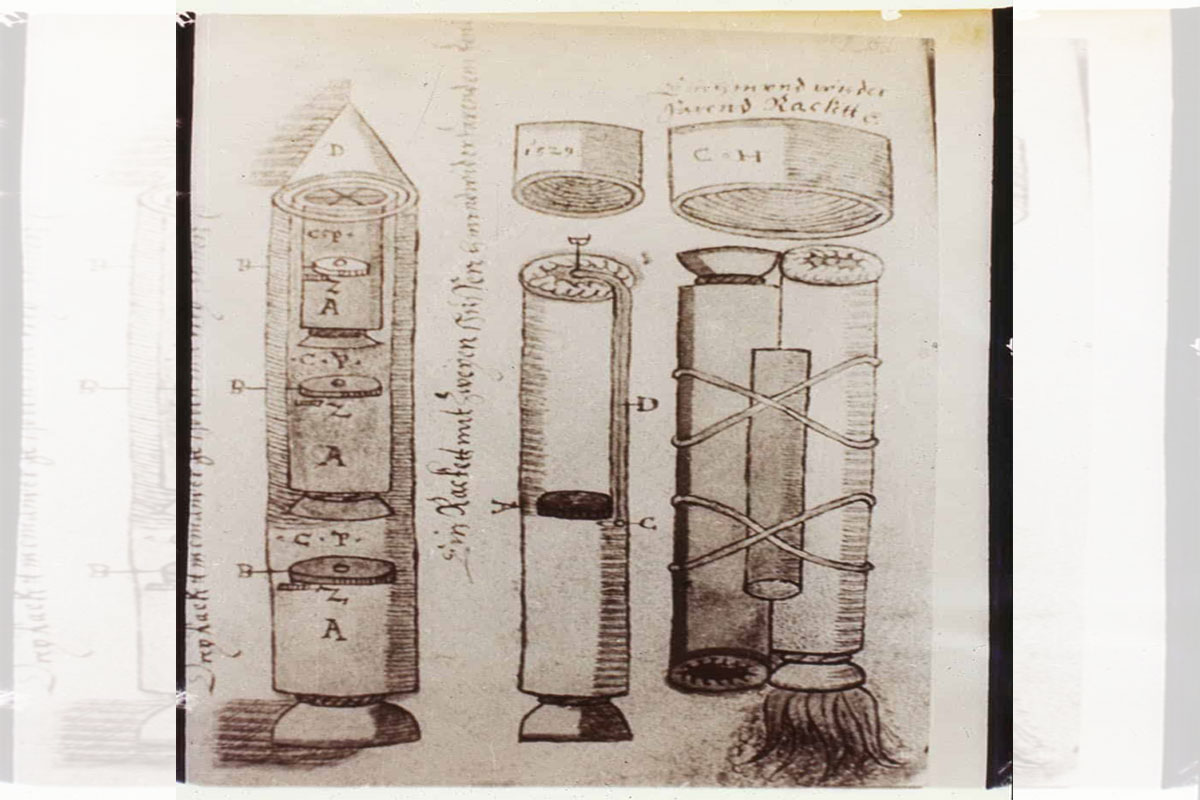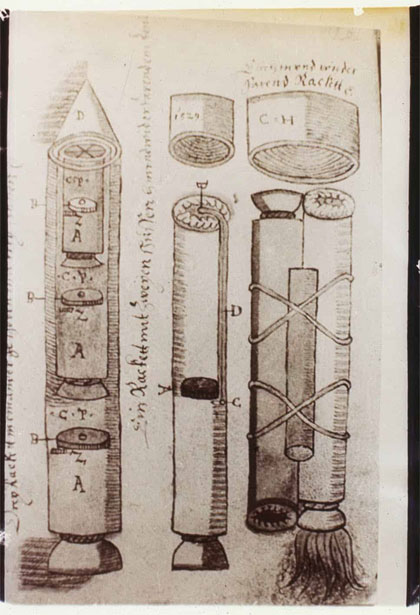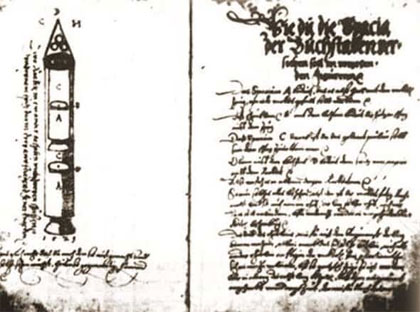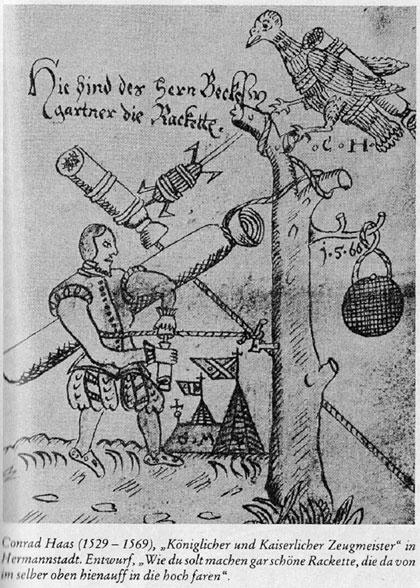
500-Year-Old Manuscript Describes 3-Stage Space Rockets And Talk About Flights To Moon
By Vicky Verma
Some researchers believe that there was once a highly developed culture on Earth. But as a result of unknown circumstances, civilization was destroyed. This is evidenced by archaeological finds that cannot be explained from the scientific point of view of modern society. There is a theory that in the past, our planet was visited by alien representatives who shared their knowledge and technologies with people, so maybe they donated incredible technologies thousands of years ago, but then these technologies brought humanity to the brink of extinction.
Some people claim that our ancestors used so advanced technologies that in our time, it is difficult to imagine them. But some of the modern technologies may have been borrowed from the past, although almost no one knows about it. You may have heard of the ancient nuclear war hypothesis or ancient flying vehicles, which can also be found in ancient texts. It is said that our ancestors could even move in space and had knowledge about the universe that surpasses all modern knowledge.
A 450-page manuscript was examined in 1963 by Romanian engineer Doru Todericiu in Sibiu’s national archive (former Hermannstadt). Todericiu examined the manuscript’s scientific and technological substance before classifying it as a work on various artillery and ballistics difficulties, despite the fact that it had previously been known as such. He learned that Conrad Haas, the author of the manuscript’s third section, had written about some amazing concepts related to rocketry.
 The Sibiu manuscript does not fit into the present history, so it draws increased attention. There aren’t many details available concerning Conrad Haas’s life. He was born not far from Vienna in Dornbach. He worked for the Imperial court of Vienna as an artillery guard and commissioned officer. He most likely traveled to Transylvania in 1551 with Imperial forces to fulfill this role, when he took the position of chief of the artillery camp at the Hermannstadt arsenal.
The Sibiu manuscript does not fit into the present history, so it draws increased attention. There aren’t many details available concerning Conrad Haas’s life. He was born not far from Vienna in Dornbach. He worked for the Imperial court of Vienna as an artillery guard and commissioned officer. He most likely traveled to Transylvania in 1551 with Imperial forces to fulfill this role, when he took the position of chief of the artillery camp at the Hermannstadt arsenal.
He penned the manuscript between 1529 and 1569, and it appears to contain, among other things, the earliest explanation of the multistage rocket’s basic operating principle. He talks about bundling rockets, stabilizing fins, and employing liquid fuel as well as describing and showing two and three-stage rockets.
The Sibiu manuscript is written in German. Many people believe that it was written using some even more ancient texts. The manuscript texts describe in detail the principles of rocketry, and there are also drawings of models of space three-stage rocket. The document contains a description of technologies for combining fireworks with weapons and even the construction of a hang glider, as well as instructions for creating fuel mixtures as liquid rocket fuel.
3-Stage Space Rockets description in Sibiu Manuscript
 What’s more, there are references to flights to the moon. According to researchers from Romania, the manuscript contains stories about a man who was able to get to the Earth’s satellite due to a unique flying machine. There are also descriptions of prehistoric fuel, which consisted of several rare elements. The rockets of this type were later launched at Cape Kennedy and used by cosmonauts in the Mercury, Gemini, and Apollo programs.
What’s more, there are references to flights to the moon. According to researchers from Romania, the manuscript contains stories about a man who was able to get to the Earth’s satellite due to a unique flying machine. There are also descriptions of prehistoric fuel, which consisted of several rare elements. The rockets of this type were later launched at Cape Kennedy and used by cosmonauts in the Mercury, Gemini, and Apollo programs.
It looks like this chronicler visited the future world. The handwritten text of Sibiu is quite long as it consists of 450 pages. It is known that the Sibiu manuscript is genuine and the experts do not doubt this, but they are in no hurry to comment on the contents of this text.
It could be claimed that this case is just science fiction if researchers of anticity did not find other strange texts and technologies. In addition, multiple artifacts found by archaeologists confirm that our ancestors were much more civilized than modern historians imagine. Manuscripts such as Sibiu have the potential to change the way people think about our history.
Description of a rocket by Conrad Haas
 It remains a mystery whether Haas succeeded in using his designs and bringing them to life. However, there are people who claim that a rocket was launched in Sibiu in 1550. It is believed that Conrad Haas created the first rocket. According to Haas, it took him more than 25 years to develop a unique aircraft. The biggest challenge, in this case, was the search for a fuel that would be sufficient to lift it into the air.
It remains a mystery whether Haas succeeded in using his designs and bringing them to life. However, there are people who claim that a rocket was launched in Sibiu in 1550. It is believed that Conrad Haas created the first rocket. According to Haas, it took him more than 25 years to develop a unique aircraft. The biggest challenge, in this case, was the search for a fuel that would be sufficient to lift it into the air.
The main focus of the paper is the fuel issue. In addition to the conventional powder components of saltpeter, sulfur, and coal, Haas also used “brandy”, with the help of which the thrust development of the rockets was to be increased: “Again, take a little crushed powder and pour in enough brandy to make a little dough. Then take it and paint the little chamber (= rocket chamber) together with the little hole (= ignition hole) on the rocket by heart.” Haas also tried and used other “fuels” – significantly, the missile’s purpose dictated the particular fuel combination.
In summary, one can say that the following developmental solutions and developments can be attributed to Conrad Haas:
• Multistage and cluster rocket
• Arrangement of fuel sets in stage rockets
• Use of different fuel mixtures depending on the rocket type, performance, area of application and design
• Use of liquid fuel
• delta-shaped stabilizing fins
• Anticipating the idea of the modern spaceship
Although Conrad Haas designed weapons to kill, he secretly believed in basic human values. His basic humanistic attitude is particularly clear from the following statement: “But my advice is more peace and no war, leave the rifles under the roof, so the bullet won’t be fired, the powder won’t be burned wet, so the prince kept his money, the gun master his life; that is the advice Conrad Haas does.”
The technical characteristics of the rocket are similar to those of modern vehicles. It was made of wooden parts covered with a layer of special stone dust, which was supposed to protect the body from burning when rubbed against the air. Contemporaries note that in the 16th century, researchers did not know the intricacies of physical processes in the air, which is why scientists could receive information from aliens.
In addition, from his youth, he was engaged in research on ancient writings found in the territory of modern Egypt. A mission to the Moon could take place in 1550. But there is no documentary evidence to support all these claims.
Lady Sala Shabazz, the founder of the Black Inventions Museum who passed away on March 28, 2002 said once: “… Unfortunately, the individuals who are commissioned to write textbooks many times exhibited prejudice and omitted other historical information. In an effort to cover large spans of time, they have briefed history and left out so many other important facts and that’s something that many people have not been aware of.”
The city of Sibiu is known to many of us because it is the birthplace of Hermann Oberth, considered to be one of three fathers of rocketry and modern astronautics. Additionally, there is a dedicated document (ID 19770026087) in the NASA archives about the Sibiu manuscript.
how&whys.com















